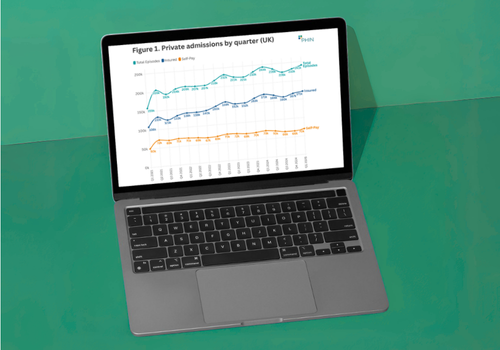Total private hospital and clinic admissions in Quarter 1 (January to March) 2025 reached 240,730, the second highest quarterly total on record, according to the Private Healthcare Information Network (PHIN) which released the latest figures today.
This near record figure comes despite a 1% decrease from Q1 2024. However, as Q1 2024 is the highest quarter on record, even with the decrease, Q1 2025 can be considered a successful one for the private healthcare sector.
There were notable variations in reported private hospital admissions between the UK nations: Scotland (+5%) and Northern Ireland (+1.6%) saw increases, while England (-1.3%) and Wales (-0.5%) experienced declines when compared to Q1 2024.
Across the UK, private medical insurance-funded admissions rose slightly (up 0.3%), while self-pay admissions fell by 4% for the same periods.
NHS England admissions rose to their highest level since Q3 2019, potentially influencing private sector demand, particularly for self-pay procedures.
Richard Wells, PHIN’s Director of Technology and Insights, said:
“This was a very positive quarter for the private healthcare sector, despite the slight downturn in admissions compared to the record holding Q1 2024. The proportion of private healthcare activity relative to total NHS England admissions rose to its highest level since Q1 2023. This suggests continued confidence in the independent sector, even as NHS activity starts to rebound.
“The continued high levels of admissions emphasise the need for patients to be informed about their healthcare options and the independent, not-for-profit, PHIN website fills that need, with verified details of the hospitals and consultants providing private care, along with a variety of patient guides.”
Procedure information
Chemotherapy was the only one of the Top 10 procedures to have a rise in admissions compared to Q1 2024. It was up by 5.9%. Significant growth was observed in less common procedures, such as varicose vein treatments (up 629%) and allergy testing (up 514%).
Patient demographics
Admissions increased the most among patients aged 40–59, while the largest declines were seen in the 70–79 and 90–99 age groups.
Admissions for female patients (130,500) continued to be more common than for male patients (109,000).
